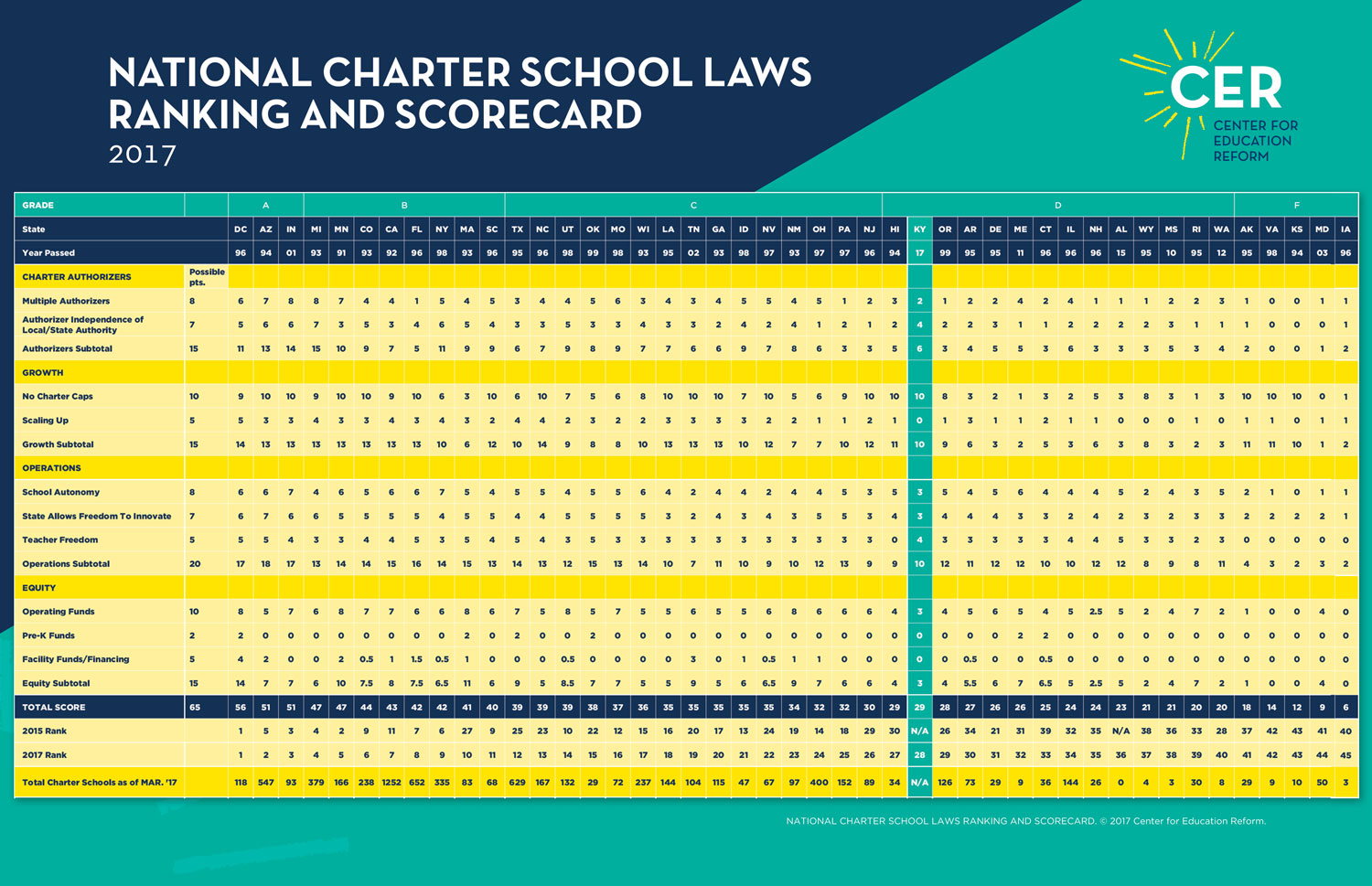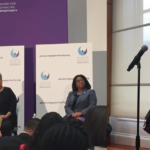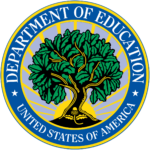Contributions to this publication were made from transcripts of remarks presented at EdReform: Revived, hosted by the Center for Education Reform, Washington, D.C., November 23, 2016.
Contributions to this publication were made from transcripts of remarks presented at EdReform: Revived, hosted by the Center for Education Reform, Washington, D.C., November 23, 2016.
As Secretary of Education Betsy DeVos testifies on Capitol Hill there is myriad of comments about what she should or shouldn’t do, and what she can expect.
Fordham’s Mike Petrilli yesterday offered that she should address the criticisms of her previous testimony by talking about the tension between civil and religious rights, and the value of a pluralistic system of schools that respects both.
Politico this morning says that DeVos can expect more questioning about the Administration’s various views and more concerning the 13 percent cut in the budget, but all we’ve read seems to miss the point.
For anyone interested in outcomes for learners at all levels, the budget should be an opportunity to start a new conversation – one that addresses how federal priorities can better enable and advance critical educational opportunities for our students. As we argued when the budget was first proposed, federal funding should be a means to an end, not simply a funding stream for previously sanctioned programs that the feds have codified into law to support one interest group or another. How does Title IV help students, and schools with technology? Does the charter grant program work for kids? Is it too bureaucratic or not big enough?
Federal funding should follow the priorities of state level efforts and effective national entities, many of which are carving new paths for personalized learning, for innovations in education technology, for efforts to eradicate zoning by zip code and free up students and families to find the best fit for their child. Those who support the status quo think these notions are heresy. Those who lead such innovations in governance, in teaching and learning know better. Let’s hear them all out. And instead of focusing on budgetary line items, we should be working to redefine Washington’s role in creating paths that lead to education innovation.
Nick Paige and Jeanne Allen
*****************
SECRETARY DEVOS received lots of advice about what to say on her latest visit to Capitol Hill—some suggested she revisit past statements or criticisms, others that she steel herself against renewed blows over the budget—but all seemed to miss the point: that federal funding should be a means to an end, not simply a funding stream for previously sanctioned programs that the feds have codified into law to support one interest group or another. Federal funding should follow the priorities of state-level efforts and effective national entities, many of which are carving new paths for personalized learning, for innovations in education technology, for efforts to eradicate zoning by zip code and free up students and families to find the best fit for their child. The best advice for everyone involved: let’s stop focusing on budgetary line items and start talking about how to redefine Washington’s role in creating paths that lead to education innovation.
AND IN CASE YOU MISSED IT…The HELP Committee cracked up when Sen. John Kennedy (R-La.) asked Education Secretary Betsy DeVos about her likability. You’re aware, I’m sure, that some people don’t like you because you support vouchers and charter schools,” Kennedy said in an exchange with DeVos about wasteful Education Department spending that she’s been trying to root out. “I’m peripherally aware of that, yes.”
DESPITE OPPOSITION BY SOME MEMBERS OF CONGRESS educational choice and opportunity are still not only mainstream but very much growing in the states:
In New Hampshire… a bill that allows certain school districts to send students to private schools using taxpayer dollars heads back to the New Hampshire Senate. The bill impacts a group of small towns which do not operate middle or high schools must send their children to schools in nearby high schools.
In Nebraska… parents celebrate the state’s lawmakers’ advancement of LB295, the Opportunity Scholarship bill which fosters an environment where students can access the highest quality education available and tax dollars are spent more effectively.
In Nevada… while the governor seemed to cast a blind eye to the demands of families wanting ESAs wanting to avoid a government shut down, we will take the consolation prize of $20 million more for tax credits for opportunity scholarships.
And in Alabama… where exists a very poorly constructed charter law, open seats at Alabama’s first charter school, The ACCEL Day and Evening Academy are rapidly disappearing. Showing the demand by parents to be able to send their children to schools as good as the ones Members of Congress send their kids to!
O. HENRY WOULD BE PROUD. Purdue president and former Indiana Governor Mitch Daniels has sent his university’s Brahmins into a foot-stomping snit by, a) pursuing a deal to buy Kaplan and, b) not asking them first. Daniels says the purchase is a way for Purdue to build up a robust online presence overnight and to reach older, nontraditional students. Of course, such decisive acts run counter to college traditions, which, Daniels told the Education Writers Assn. are often slow to change due to a “culture of committees [where] everybody has to have a say.” Meanwhile, Purdue’s faculty senate (a type of committee) stressed the need for shared governance (i.e. governance by committee) and said the deal should be rescinded because it didn’t show “respect for the Purdue faculty” (which we’ll call “the committee of the whole”). Yes, as Daniels pointed out, “ironies abound.” “Places that are supposed to be the havens of free inquiry too often are places where conformity of thought is enforced. Places that teach… creative disruption… can’t imagine that it would happen here. The places that are the seedbeds of innovation in so many ways don’t innovate institutionally very often.”

17th Edition March, 2017
Since 1996, CER’s yearly scorecard and ranking of state charter school laws has provided guidance and feedback to policymakers on the relative strengths and weakness of charter school policies and their effectiveness in fulfilling the true meaning of the words “charter school law,”— i.e., paving the way for high numbers of strong, autonomous, healthy charter schools, that provide meaningful opportunities for families and their children, and the chance for innovation for all involved.
Sixteen successive reports were based on a variety of criteria first designed and validated by the pioneers of chartering. Each year, the national rankings established by CER have not only predicted how a particular law might work in practice, but presented a real-time evaluation of whether, and how, charters are able to operate given the freedoms or restrictions embedded in law. The rankings and corresponding analysis are grounded in the principles and intent of chartering. We review whether a state’s charter school law:

We are now well into the third decade since Minnesota passed the first state charter statute. The number of charter schools has continued to increase each year at a steady but relatively slow pace. But this past year, that growth abruptly came to a near halt. Overall, the nation’s nearly 7,000 charter schools still serve a fairly small percentage of the total number of students receiving public education, roughly six percent. Some states and cities have far more market share and point the way to what healthy expansive choice does for the whole of public education.
Overall, the impediment to consistent, sustained growth of charter schools is that most state officials view charters, or other school-choice policies, as a core strategy of education reform. National and state top-down policies, intended to broadly impact all public school students or teachers in a state—whether standards and testing, teacher evaluation/compensation, or other efforts—continue to be perceived as the main action, often engendering fierce debates and then later being abandoned after a number of years. Yet, overall improvement in U.S. student achievement on the National Assessment (NAEP) is minimal at best and American students are not closing the gap with our top international competitors.
CER noted in its 2015 report that while “…demand [for charter schools] continues to outstrip supply…” there has been a “lack of progress made in state houses across the country over the past few years to improve the policy environment for charter schools” and, more specifically, “… it is abundantly clear that little to no progress has been made over the past year…”.
In recent years, there has been significant attention—especially, but not exclusively, among authorizers—on a perceived need to focus on charter “quality over quantity”. The strategies discussed have included more stringent approval processes as well as “culling the herd” during charter renewal to let only those schools deemed strong performers continue.
This year, the movement crept to a near halt, a result of these very ill-conceived state policies and what is being termed “regulatory reload.” There is widespread evidence of creeping regulatory intrusion in decisions regarding academic programming, curriculum, discipline, and teacher qualifications. The problem, it appears, is policymakers who are given numerous recommendations no longer know the difference between policies that advance the cause of effective charter schools and those that strangle them.
But are charter regulators really the key actors in improving the quality of teaching and learning in charter schools? We see no evidence of that. In keeping with CER’s historic values and philosophy, which guided the strongest charter school laws, we have introduced some new elements to better reflect the policies to which states should aspire. By focusing on achieving perfect scores in four critical areas, states can reverse the encroaching isomorphism – the inexorable push to make all schools look and operate similarly – and spawn the kinds and quantities of schools that truly put students on a path to access exceptional educational opportunity. Those elements are based on the following principles:
Multiple Authorizer Independence: Multiple authorizers remain critical, but almost as critical, is the independence of those authorizers. A new trend since the 2015 analysis is the prevalence in states of entities we call “uber authorizers,” newly created regulatory bodies, or existing state agencies, endowed with more power to regulate and revise rules. Such policies are sold as “standards” to drive quality, but they are no more standards than requiring a teacher to be certified is a qualitative standard. Uber authorizing provisions put state agencies in control of independent authorizers, negating independence. Those same agencies then become empowered to do precisely what they are not capable of doing – deciding when and how parents should have options over what types of schools under what types of conditions. The net effect is a growth of oversight powers that are intended to police quality but end up micromanaging, and thus discouraging, the creation, growth, and advancement of independent public schools.
States that assure independence for authorizing from traditional state entities and are free from uber authorizing, score higher than those that do not. While still number one in our rankings, D.C. risks losing ground if it continues on a slow but slippery slope of allowing the city and its agencies to micromanage the authorizer’s processes. It’s also unique in that it has one authorizer that was created when the city did not have a “state” board of education, and when the city was under the control of an independent board itself from the city council. That legacy of independence is now threatened by the restoration of city structures that have begun to assert various controls over chartering in the city. The law provides for the establishment of new entities for authorizing, such as universities. Pursuing additional authorizers would allow the existing D.C. Public Charter Board to stay on its feet, and create alternative innovations for opening and managing new schools.
Scaling Up: Much focus has been put on scale in the last few years. Philanthropic dollars, research reports, and even federal policy encourages scaling up of proven practices and networks. But there is more to scaling up than expanding an already existing model of schooling. Scaling up should include the extent to which state laws permit the natural expansion of schools – whether they are single site or network – as well as the expansion of the number of schools. If only proven schools are scaled, what does that say about the notion that chartering is intended to provide for not just replication but innovation in brand new schooling ideas? After all, those who today are proven were once new and unproven.
The rankings account not only for whether a state’s law provides for growth, but whether the policy in law actually results in growth in practice.
Freedom to Operate, Freedom to Innovate: Traditionally, the National Charter School Law Rankings factor in any limitations or freedoms to operate and are awarded points based on such conditions. However, it is increasingly clear that complexities in the law are growing, and they now not only stipulate the degree to which schools are free from state and local laws, but often stipulate substantial conditions dictating not only how and when charters are created, but how they operate. States that permit innovations to be developed and adopted – innovations in curriculum, technology, structure or even the kinds of businesses or partnerships with which they engage – will yield more innovation and diversity than those that do not.
Many critics often argue that charter schools no longer look or seek to be as innovative as had been – reportedly – their intent. It was actually something much more compelling than that which brought charter schools into existence. It was the demand for parental choices for diverse learning options that did not follow the same model as the monolithic school districts. It was diversity and choice, and diversity would allow the creation of innovations. Innovation need not be something dramatic or new (indeed innovation can be doing the same thing slightly differently). The reality, in all too many instances, is that charters have been forced into the traditional education box. Thus, the freedom to innovate reflects whether a state law allows, for example, both on-ground and online or blended models, whether they can contract with all manner of educational provider, whether same-sex schools are allowed, whether there may be alternative high schools with alternative assessments attached to them, and numerous other potential innovations that neither humans or law may have yet conceived.
States that permit schools the freedom to innovate and do not prescribe conditions that look and operate like traditional public schools will rank higher than those which limit variety and innovation.
Equity – As important as being able to open and operate in a state that has multiple independent authorizers is being able to focus on the work needing to be accomplished. To do that requires funding, funding that is often woefully inadequate and often deliberately skewed to be inferior to traditional school districts. Many in the charter school advocacy world have been open to negotiating lower per-pupil dollar amounts to get a law passed, even though doing so would hamstring those schools from the start. Others ignore complex funding formulas or simple words and phrases that sound good in law but can often be widely interpreted in practice. For example, take the word “proportionate” which is in a companion funding law to Kentucky’s new below-average charter school law. Proportionate technically means relative or in measure of other things. Such terminology gives the funding authorities, in this case school districts, the authority to determine what is and isn’t proportional to all other spending categories. They can, and will, self select which funding and which amounts go to charters. Districts can narrow the amount spent per pupil. In other words, just one word sanctions arbitrary decision-making. That is why they were opposed to using the words “pro-rata” in the funding language, which would have clearly required precise, individual, equalized student funding to follow students to charters.
States are evaluated not only on both the policy and practice of operational funding statutes, but also on whether and how they fund facilities and this year, for the first time, Pre-K. If, as it should be, chartering is part of the overall education landscape and education reform efforts in this nation, funding must also be both commensurate and comprehensive.
A final word about chartering –
The debate over charter schools is now divided neatly into two camps – those who believe that accountability means there is additional oversight from centralized government entities, including state education departments and the federal government in driving start up grant funds, and those who believe that accountability is multi-dimensional, beginning with parents making choices and not being confined to conventional definitions of what works for every child.
The parent choice accountability camp also believes that data is essential to any educational enterprise and that it must be available and transparent. The role of government is to require data to be reported; it is not to require hostile government entities to parse and use the data to close schools when that data is not only easily manipulated but often misunderstood.
Raising the academic quality of charter schools is best achieved by enabling students to leave mediocre charter schools and select from higher quality nearby charter school options. The “culling of the herd”, where necessary, should result from stronger competition that enables parents to choose more effective schools, not sudden regulatory termination that dumps students back into the very public schools they were seeking to avoid (and which may be worse). In economic terms, overall quality is raised by good charter schools “crowding out” mediocre charter schools. Charter authorizers should fulfill a significant, but limited, academic accountability role of terminating or not renewing consistently, demonstrably bad schools, by documenting that the education they offer is not only not meeting students needs but that enrollment reflects such failures. Authorizers should also terminate charters for other non-academic reasons, such as safety or financial malfeasance.
To accomplish what we, along with well-known researchers and other choice advocates, agree represents a hearty charter school movement, the emphasis should be on eliminating hurdles to growth of well-managed charter schools and organizations to serve more students.
Charter regulation, approval, and oversight should be transparent, predictable, and avoid micro-management of academics, discipline, and staff hiring and termination. Regulation should be flexible enough to encourage charter schools designed to meet the needs of special populations by allowing them to meet requirements that are reasonable and appropriate for their students. And yet, it is precisely that regulation that is discouraging new charter school growth. With barely 6 percent of all public school students in charter schools nationwide, two percent growth over one year is totally unacceptable and an indication that something is amiss. Risk-averse, highly bureaucratic state and local actors are causing the stagnation. It comes not just from opponents, but from heavy-handed friends. Their heavy reliance on government to solve perceived issues of quality will bring charter schools to a screeching halt unless the policies they espouse reverse course.
We hope the 2017 updated criteria and rankings will catalyze a necessary, national and state-level debate on the most effective ways to ignite charter growth in order to increase educational options as well as achieve excellence. It is clear from the trends that real education reform does not result from local compliance with federal regulations or statewide requirements but, comes instead, school by school and classroom by classroom. It succeeds when educators work with parents at the local/institutional level to create, refine, and maintain high-performance schools that raise achievement and meet the needs of their students. Current charter requirements and policies that unnecessarily constrain charter growth and competition or deter investment need to be rethought and revised. The predictable absence of significant NAEP achievement gains in recent years in all but a handful of communities and states with the strongest laws, and the lack of consensus on what comes next, means there is an opening for fresh thinking on what constitutes education reform.

June 2, 2016
CONTACT: Leonora Cravotta, Director Communications | (202) 750-0016 |[email protected]
WASHINGTON, D.C.— The leaders of The Charter School Roundtable have cautioned Nevada’s policymakers against enacting Assembly Bill No. 49, a bill creating “an overly bureaucratic and non-charter friendly environment for Nevada and will have the effect of limiting all growth and development other than schools that operate in similar ways to traditional public schools.”
In the letter, the Roundtable, a national leadership group dedicated to sound charter school policy and representing hundreds of thousands of students, cautioned the lawmakers that this bill would put charter schools in the same regulatory path that traditional public school educators have been fighting for years.
“You were probably told that this bill would ensure increased accountability for public charter schools in Nevada. If the traditional public schools like those in Clark County are your model of accountability, this is your bill.”
AB49 was proposed by the State Public Charter School Authority (SPCSA) to strengthen its hand in making decisions about charter schools. Instead, it creates a punitive, input-driven, and flawed policies that put traditional public school districts on a path to failure. While requiring more regulatory paperwork and innovation-averse behaviors of charters, the Charter Authority itself would be exempt from the Administrative Procedures Act and therefore permitted to operate outside of all other public agency requirements, including transparency.
The leaders cautioned the Senators: “Please do not support AB49. It is not amendable as constructed and all students deserve better than this.”
Among the signers were schools belonging to The Charter School Roundtable representing almost half a million students nationwide, including Boys’ Latin of Philadelphia Charter, Challenge Charter Schools, Charter Schools USA, GEO Foundation, iLEAD Schools, K12 Inc. and the SABIS Network.
@edreform | 2024.edreform.com

Sometimes it takes a giant telegram to deliver a giant message — that educational tax credits are critical to the future of Catholic schools.

Students in Harrisburg, courtesy of John Franco.
Some two dozen students and supporters of the REACH (Road to Educational Achievement Through Choice) Foundation traveled to the state Capitol in Harrisburg May 10 for the annual Educational Improvement Tax Credit birthday party. EITC allows more than 50,000 students a year to choose the school that best fits their needs.
“This is our lifeline,” said Don Militzer, principal of Madonna Catholic Regional School in Monongahela. “Our parents make such sacrifices to send (their children) to a Catholic school. It’s up to us to make every effort to ease the burden a little bit.”
The supporters delivered some 40 “colossal grams” to the offices of Gov. Tom Wolf and various senators and representatives. Attached to each telegram were the signatures of more than 1,500 students and staff.
They were the brainchild of Deacon Jack Miller, diocesan director of development and public policy. Among his responsibilities is obtaining tax credit-related funding.
Deacon Miller said he has been inspired by those who support tax credits and by those who traveled to Harrisburg. When people talk about the future of the church, he noted, Catholic education is a big part of it. Not just schools, but religious education programs and other forms of instruction.
“If we don’t support it, it’s not going to be here,” he said. “And these people went out and they’re promoting it and supporting it. God bless them.”
The EITC and Opportunity Scholarship Tax Credit programs receive contributions from eligible companies that do business in Pennsylvania and pay certain state taxes. Company money earmarked for state taxes goes to provide tuition assistance grants to eligible students.
Among those on the trip were John Kido of St. Bernadette Parish in Monroeville. He knows the value of a Catholic education and he volunteers in the lunchroom, selling cookies and milk, and cleaning tables. He is also a member of the school advisory board at St. Bernadette. Among the board’s projects is getting businesses to contribute to the EITC.
“If you want the politicians to do something for you, you have to let them know you care,” he said. “And that only happens if you show up and speak to them.”
It involves more than just one visit, Kido added. It takes multiple visits, conversations and letters, but those actions have an impact.
Naomi Wells, a parent from Northside Catholic School, noted the importance of having the representatives see the resolve of people regarding the issue. “I’d like to see more people doing it, more representatives for the schools,” she said.
The birthday party was held outside on the steps of the Capitol building. Catholic schools aren’t alone in their support of the EITC and OSTC programs. The rally included representatives of other Christian institutions, as well as Jewish institutions such as Hillel Academy in Pittsburgh’s Squirrel Hill neighborhood.
The speakers at the rally included Otto Banks, executive director of REACH, as well as state representatives who are supporters of the program. Among them was Speaker of the House Mike Turzai, a representative of the 28th District in Allegheny County. Turzai was honored with the Paul M. Henkels Award, which celebrates those who work to expand educational options in Pennsylvania.
The Pittsburgh supporters had earlier visited his office and delivered a telegram. During the visit, he spoke of what his more than 20 years of Catholic education has meant to him. He is a graduate of Our Lady of the Sacred Heart High School in Moon Township and the University of Notre Dame. His children all have Catholic school backgrounds.
Blake Bonidie, a third-grade student at North American Martyrs School in Monroeville/Pitcairn, was among the students who visited Turzai’s office. He said it was a “cool” experience to meet the House speaker, adding, “It was very inspiring to me.”
Joining him on the visit was his mother, Sandy, PTG president at the school. She spoke of how tax credit support helped her keep her son in school after she lost her job last year. It was a “big deal,” she noted, for the supporters to meet the representatives.
“It’s a great experience for the kids,” she said. “It’s a great experience for parents to understand and see what happens, and be part of it.”
Lenore Randall has attended at least a half-dozen of the birthday celebrations. Her daughter is a seventh-grader at St. Rosalia Academy in Pittsburgh’s Greenfield neighborhood. Her one son attends Central Catholic High School, and another is a graduate of the school. She spoke of how important the EITC has been in helping her get her children through school.
“They get to see faces,” she said of meeting the legislators. “They get to see where their money is going. And they get to hear from us how much we appreciate it.”
Lisa Gandy made the trip with her daughter, T’ana, 13, a student at St. Rosalia. A single mother, she said the EITC has allowed her to send her two children to Catholic schools.
“I value their education because education is the foundation for the rest of their lives,” she said, adding that it was an “interesting” experience to be able to deliver telegrams to the representatives.
Mark Grgurich, principal of Christ the Divine Teacher Catholic Academy in Aspinwall, said that tax credits dedicated to his school go a long way to easing the financial burden on parents.
“It’s important for the legislators to see the students and the job that they’re doing,” he said. “And to see the parents that are supporting Catholic education.”
In pointing out that he has a high percentage of students who are receiving assistance, Robert Munz, principal of St. Raphael School in Pittsburgh’s Morningside neighborhood, noted that the presence of the young people allowed the representatives to see firsthand how legislation affects their lives.
“This is important to us because we would need this in order to survive,” he said. “Our enrollment would probably be a lot less than what it is now without these tax credits.”
He recognized the efforts of Dr. Ronald Bowes, a former diocesan official who was an instrumental figure in the development of the REACH program. Bowes is still a member of the board of directors for the foundation and attended the celebration.
Munz also noted the “passion” of Deacon Miller in drumming up support for the rally at a recent principal’s meeting, adding, “I said I need to be there for this.”
Dr. Edward Scheid, on the staff of the diocesan Secretariat for Parish Services, has gone to Harrisburg annually for some 15 years. He pointed to the importance of expanding tax credit initiatives as much as possible to support children, the schools and especially the parents.
Parents have the unfair burden, he noted, of having to pay property taxes to support public education that they don’t utilize. They are “a bargain” for the state.
“God bless them,” he said. “Thank them so much for their support. We need to expand the program as much as we can to make it more fair, more equitable, for all the children of the state of Pennsylvania.”
The rally on the steps drew an enthusiastic response. Scheid was among the more vocal members of the audience, following along with the chants from the podium. He said he enjoys the interaction and the opportunity to visit the representatives. He thought the large telegrams were a hit.
“We left something behind,” he said of them. “We left a big message that this is important. 1,500 kids signed the message. It’s a good program.”
Created for K-12 in 2001, the EITC program was at first capped at $30 million. With the passage of HB 1606 in 2016, it increased by $25 million, with a total of $175 million.
The OSTC program allows businesses to provide funding to students who reside within the boundaries of a “low-achieving school,” a public elementary or secondary school that ranks in the bottom 15 percent based on combined math and reading scores on the most recent PSSA results.
The REACH Foundation and its sister organization, the REACH Alliance, were founded in 1991 to address school choice legislation. In addition to promoting vouchers, it advocates and educates the public on tuition tax credits, charter schools and home schooling.
More information on EITC and OSTC is available by calling Deacon Miller at 412-456-3000, ext. 3262. Information on the REACH Foundation can be found by visiting www.paschoolchoice.org.

A PROMISE FULFILLED? CER leadership joined our friends at Thurgood Marshall Fund at the inaugural forum of the Center for Advancing Opportunity, whose mission is to develop sound policy to help the needs of fragile communities. These comments by Dr. Alonzo Smith, Professor of History, Montgomery College, sums up the discussion:
“Public Schools are the heart and soul of a democratic society, the job is to bring people together, and it hasn’t done that, it isn’t doing that. The public school system as a whole hasn’t delivered properly. Education, like the criminal justice system has this coercive thought mentality… we need to ask the questions of our schools that we ask about our prisons and courts.”
AN ASTOUNDING, TRAGIC, STAT: “Today 750,000 of incarcerated people have disabilities.” Jennifer Mizrahi, RespectAbility. RespectAbility is on the front lines in the battle to reduce stigmas, failed government policies, and other obstacles that deny people with disabilities the opportunity to achieve the American Dream.
CHARTERING IS SYSTEM CHANGE. Increasingly the charter community and its various tentacles are talking about the importance of charters needing or being required to share their best practices to help change traditional school systems. The argument among an increasing number of advocates is that charters must become better district partners, and visa versa. But this new piece by the charter concept’s original developer, Ted Kolderie posits that chartering is system change. Their ability (under some laws) to innovate and the pressure they cause are necessary for any change to be realized.
CHANGE REQUIRES EQUITY. And thanks to Legacy Charter School in South Carolina there will be more of that for all the state’s charters! A challenge to the U.S. Department of Education waged by the Greenville County charter school over the state’s distribution of Title 1 funding resulted in the federal department directing the state to require the district to redirect Title I support to Legacy due to its prior growth and expansion. Can anyone say ‘precedent?’
HATS OFF TO THE GRADUATES! We’ve been watching with pride all the graduations of students who have excelled in their schools of choice despite the odds:
Arizona Connections Academy celebrated the graduation of the 100 students of the Class of 2017.
100% of Harlem Village Academy’s seniors have been accepted to college. That’s great news for the New York City charter school. For more information about Harlem Village Academy, visit http://harlemvillageacademies.org.
Founded in 1993, the Center for Education Reform aims to expand educational opportunities that lead to improved economic outcomes for all Americans — particularly our youth — ensuring that conditions are ripe for innovation, freedom and flexibility throughout U.S. education.
MONEY The Trump Administration’s FY 2018 proposed education budget is an opportunity for a national dialogue on how we educate, not how much we spend, according to a statement released today by the Center for Education Reform’s Founder and CEO, Jeanne Allen.
House Education & Workforce Committee Chair Virginia Foxx said the budget is still a proposal, subject to congressional review. However, she reiterated the following concern overall:
“Students, workers, and small businesses cannot succeed in an economy that is crippled by too much government and too much debt. …
“For too many years, the federal government has not lived within its means because policymakers have not set real priorities. The president’s budget proposal reflects the consequences of this failed approach, as well as the urgent need for tough choices and bold solutions to pursue a more responsible course.”
The head of the Black Alliance for Educational Options (BAEO) Jacqueline Cooper, applauded some aspects, while calling others draconian:
“While we applaud the Administration’s efforts to expand parental choice options for our nation’s children, including increased spending for public charter schools, a new private school voucher program, making $1 billion within Title I of ESSA available for students to attend the school of their choice, and an education tax credit program that will be part of future tax reform, the slashing of $9 billion – or 13 percent – from the Department of Education’s overall budget is an awfully painful way to put families and children first.
“If passed by Congress, these draconian cuts to public education will undoubtedly hurt our most vulnerable children…”
U.S. Secretary of Education Betsy DeVos said the budget “reflects a series of tough choices we have had to make when assessing the best use of taxpayer money.”
American Federation of Teachers President Randi Weingarten called the budget “cruel.”
It’s certainly not a warm and loving budget, but cruel? Isn’t it cruel to allow so much money to be spent to subsidize bureaucracy and not serve children?
In other news…
EVERYTHING’S ALWAYS BIG IN TEXAS Virtual charter schools are set to expand under a bill passed by the Texas State Senate this week. If adopted thousands more students will have access to online opportunities, which PublicSchoolOptions.org President Tillie Elvrum argues helps students work in an environment that best meets their unique needs.
LEHIGH, PA CASE SANCTIONS CAP LIFT Pennsylvania has ruled that Lehigh Valley Regional Academy can have its charter renewed without enrollment caps, ending its battle with the Bethlehem Area School District, which was seeking a cap to save $1 million. When LVA’s charter was up for renewal in November, the Bethlehem Area School Board approved a charter that included an enrollment cap. The imposition of a cap is against state law. A similar battle was tried and won in Philadelphia a few years back; sadly the School Reform Commission extracts cap commitments from charters in not so acceptable ways.
BOOKS HELP KIDS A group calling itself “Better Outcomes for Our Kids” (BOOK) has been formed in Atlanta to help families better navigate the world of school choice. Because many parents “don’t understand that their children don’t have to attend the traditional Atlanta public school in their neighborhood,” the group’s founder says BOOK wants to be a “beacon of information” to help parents understand, and know the options that are available to them via charters and school choice. What a great idea—for parents in Atlanta and everywhere choice options exist. (Online at BookATL.org)
Want more? Subscribe to the Media Bullpen.

Tuesday, May 23, 2017
Contact: Leonora Cravotta, Director of Communications, (202) 750-0016, [email protected]
Much more can and will be said about the Administration’s proposed budget. For now, we should use it to open a national dialogue about how we educate, not how much we spend.
The president’s budget is neither offensive nor unfair. It contains some recognition that the federal government’s efforts should follow state and local efforts and not further federal programs that fail to advance or transform learning.
The real question today, and always, should be: ‘How does federal spending better enable and advance critical educational opportunities for students?’
Do programs support the many state and local approaches to fueling improved teaching and learning, or do they exist merely for their own sake, independent of state action, born of, and protected by, interest groups?
Throughout the nation, at all levels, policymakers, parents, teachers and innovators are leading critical new endeavors to focus on student achievement, some by using new technologies in the classroom, some by implementing new schools of choice, some through boosting the traditional activities of districts.
Federal funding should support these efforts, not sustain or increase previously sanctioned programs that do not follow the needs of communities.
Federal education programs for primary and secondary grades represent only a fraction of total K-12 and supplemental spending – funding programs that, over time, have had mixed reviews. Those who gain from those programs always argue that the funds are “necessary” regardless of their effectiveness.
Despite nearly forty years of effort by the US Department of Education, we remain A Nation at Risk. Our students are woefully unprepared for modern day challenges locally and globally, in large measure because we persist in funding programs and not students and where and how they learn best.
Instead of focusing on budgetary line items, we should be working to redefine Washington’s role in creating paths that lead to education innovation and in carving out opportunities to match each student’s needs with the institutions or learning environments that best suit them.
The most important work for this Administration and Congress isn’t the education budget, it’s how those funds are permitted to be spent. In that regard, the effort by Secretary DeVos to review and remove unnecessary federal regulations, programs and spending can be transformative. Abolishing regulations and non-regulatory guidance will free up funds, reorient efforts, and behaviors—for the better. The most important topic on this issue for lawmakers must be how the entire federal budget might expand opportunities for students, wherever and however they learn.
This is the Primary Sidebar Widget Area. You can add content to this area by visiting your Widgets Panel and adding new widgets to this area.
Privacy Policy | © 2025: Center for Education Reform. All rights reserved.
DISCUSSION ON BUDGET SHOULD BE REFOCUSED
As Secretary of Education Betsy DeVos testifies on Capitol Hill there is myriad of comments about what she should or shouldn’t do, and what she can expect.
Fordham’s Mike Petrilli yesterday offered that she should address the criticisms of her previous testimony by talking about the tension between civil and religious rights, and the value of a pluralistic system of schools that respects both.
Politico this morning says that DeVos can expect more questioning about the Administration’s various views and more concerning the 13 percent cut in the budget. But all we’ve read seem to miss the point.
For anyone interested in outcomes for learners at all levels, the budget should be opportunity to start a new conversation – one that addresses how federal priorities can better enable and advance critical educational opportunities for our students. As we argued when the budget was first proposed, (to lots of hue and cry that we didn’t jump all over the cuts!) federal funding should be a means to an end, not simply a funding stream for previously sanctioned programs that the feds have codified into law to support one interest group or another. How does Title IV help students, and schools with technology? Does the charter grant program work for kids? Is it too bureaucratic or not big enough?
Federal funding should follow the priorities of state level efforts and effective national entities, many of which are carving new paths for personalized learning, for innovations in education technology, for efforts to eradicate zoning by zip code and free up students and families to find the best fit for their child. Those who support the status quo think these notions are heresy. Those who lead such innovations in governance, in teaching and learning know better. Let’s hear them all out. And instead of focusing on budgetary line items, we should be working to redefine Washington’s role in creating paths that lead to education innovation.
Nick Paige and Jeanne Allen